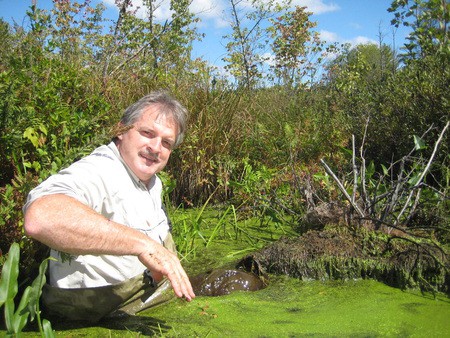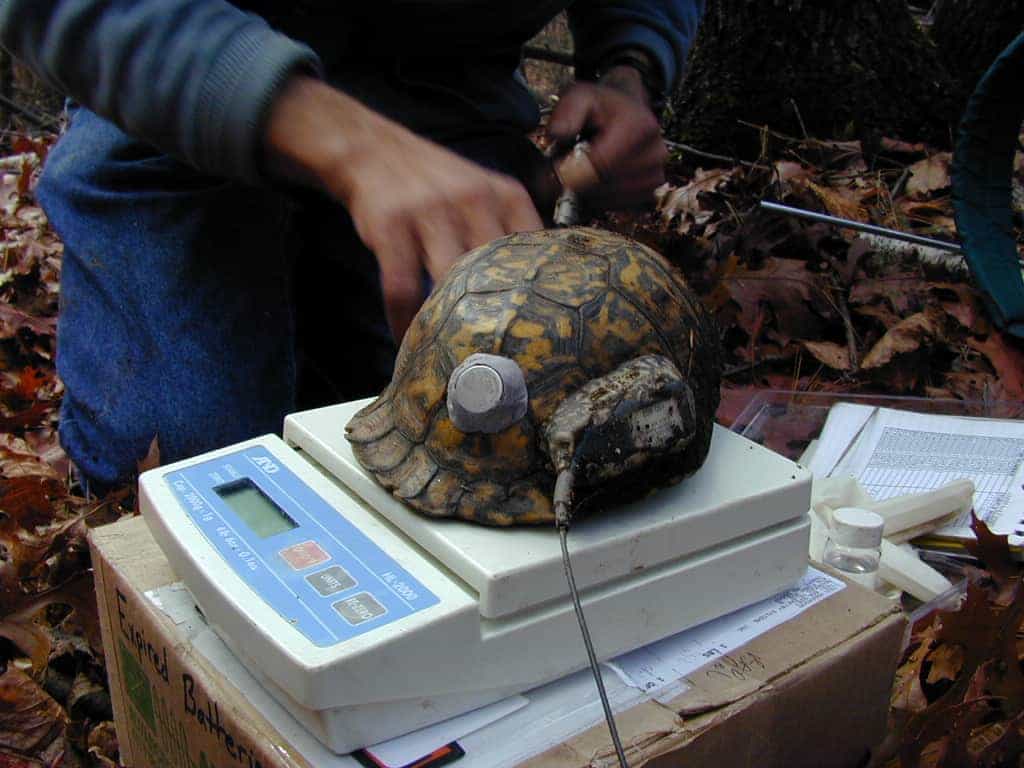WILDLIFE PROTECTION
Wildlife, Botany, Rare and Endangered Species Protection
Rare and Endangered Species
Projects in the Northeast sometimes occur within habitat for wildlife or plant species that are protected under state or federal Endangered Species Acts and Regulations. Oxbow has specialized for more than 25 years in assessing Threatened and Endangered Species and their habitats and providing permits to help projects meet the applicable performance standards. Oxbow staff have more than 60 years of experience in evaluating rare species and facilitating permit compliance.
Habitat Assessments
The initial phase of most projects located within mapped habitat for rare and endangered species is a Habitat Assessment. Oxbow’s broad experience and ecological research experience means that we can identify important habitat features efficiently, often having done similar work in the vicinity over the prior twenty-five years. The assessment itself can sometimes indicate that there is no conflict with the listed species – habitat mapping is a guidance tool, not where the animals or plants necessarily live – or can determine those portions of a project that may have a conflict and help guide its resolution through our representation to the regulatory authorities.
In Massachusetts, a Habitat Assessment is a part of the Massachusetts Endangered Species Act “Checklist” filing. In other New England and Northeastern States a Habitat Assessment is needed, though its format may be adapted for the species and the regulations that apply. The Habitat Assessment will include GIS mapping, cover type mapping and a comparison of the species’ habitat needs and that are found on the project site.


Conservation and Management Permits (MA)
When a project in Massachusetts is determined to result in a “take” of a state listed plant or animal species, a Conservation and Management Permit is typically required. Oxbow has successfully prepared and submitted many dozens of Conservation and Management Permits over more than twenty years allowing projects to proceed to completion. If you find your property is located in mapped Priority or Estimated Habitat, Oxbow can quickly evaluate your project and work with you to plot a course to approval. CMP clients include utilities, municipalities, residential and commercial developers, solar developers and non-profit organizations. In most instances, our clients can avoid the need for a CMP once the site is assessed, but if not, we understand the regulations and the biology of the species involved; both critical to a linear approval path.
Vernal Pool Surveys
Vernal Pools are breeding sites for terrestrial amphibians. These animals rely on seasonal ponds for breeding, egg deposition, and larval development. Generally, the larval phase of their life-cycle is not compatible with fishes (fish eat the tadpoles or larval salamanders). There are regulations at the state, town and federal level regulating vernal pools and the terrestrial environment surrounding them. Oxbow Associates has surveyed several hundred vernal pools for utility and commercial clients as well as for government agencies and conservation organizations. Understanding the component species associated with a vernal pool can facilitate project review and approval.
Amphibian and Reptile Surveys
“Herptiles” native to the northeast are a specialty at Oxbow Associates. Scott Smyers, our Vice-President and Principal did his thesis work with salamanders; Brian Butler did his thesis research on Blanding’s turtles. We have conducted field studies with more than forty native herpetozoan species and have a deep catalog of successful permit acquisition in Massachusetts and adjoining states. Oxbow has years of experience with various survey methods for different species of amphibians and reptiles. We own dozens of turtle traps, hundreds of amphibian traps, radio-telemetry equipment, audio recording devices to document frog calls, and facilities and associates who specialize in veterinary medicine and reptile biology. Due to our extensive experience, we have been approved to work with many of the rarest species in the Northeast including timber rattlesnakes, northern copperheads, black rat snakes and Blanding’s turtles. We specialize in merging project needs with the applicable performance standards.
Our project list includes gas and electric transmission projects, power plant, solar/photovoltaic and wind generation projects, airports, quarries, residential, commercial, military and government services.
Species we have experience with and can help your project with include:
Blanding’s Turtle
(Emydoidea blandingii)
Box Turtle
(Terrapene c. carolina)
Wood Turtle
(Glyptemys insculpta)
Northern Red-bellied Cooter
(Pseudemys rubriventris)
Bog Turtle
(Glyptemys mulhenbergii)
Spotted Turtle
(Clemmys guttata)
Diamondback Terrapin
(Malaclemmys terrapin)
Blue-spotted Salamander
(Ambystoma laterale)
Eastern Spadefoot Toad
(Scaphiopus holbrookii)
Jefferson Salamander
(Ambystoma jeffersonianum
Marbled Salamander
(Ambystoma opacum)
Northern Spring Salamander
(Gyronphius p. porphyriticus)
Eastern Worm Snake
(Carphophis amoenus)
Timber Rattlesnake
(Crotalus h. horridus)
Northern Copperhead
(Agkistrodon c. contortrix)
Black Rat Snake
(Pantherophis alleghaniensis)
Botanical Surveys
Botanical Surveys require a credentialed botanist with taxon-specific experience. Oxbow Associates has performed botanical surveys for some of the region’s rarest plants from the Berkshires to the Cape and Islands in diverse habitats. We have undertaken transplantation and propagation projects in order to allow progress of our client’s projects. Among the species we can assess and survey for are:
Bat Surveys
As part of an ongoing amphibian research project, Oxbow staff (S. Smyers) has been using programmable audio recording devices (Song Meter, Wildlife Acoustics, Inc.) to monitor frog calls since 2009 and recently invested in specialty acoustic monitoring devices (SM4 BAT, Wildlife Acoustics, Inc.) to detect bat calls. This is a natural progression of expanding our ecological monitoring services. We have found that an incredible amount of data can be collected very efficiently using digital audio recording devices and look forward to providing acoustic monitoring as part of our services. Oxbow has several Associates experienced in acoustic data analysis and field research in the northeast. Therefore, our team can provide habitat evaluations, acoustic monitoring, and field studies for bats in the northeast.
Invertebrate Surveys
Rare invertebrates in the northeast include various moths and butterflies, Odonates (dragonflies, damselflies), tiger beetles, freshwater mussels and crustaceans. Oxbow has conducted surveys, obtained conservation permits, and conducted translocations of invertebrates in Massachusetts for solar, dam rehabilitation, utility and residential projects. Lepidoptera (moths and butterflies) can often be evaluated out of season based upon their specific food plant occurrence in some habitats. Therefore, often we rely on our botanical expertise to identify food plants for rare invertebrate species. Oxbow has diverse capabilities in assessment and permitting for northeastern invertebrates.
Mortality Avoidance Plans
Oxbow is often successful in avoiding the need for a Conservation and Management Permit by providing mortality avoidance plans and implementation. For long-lived species such as turtles it may be critical to avoid individual mortality to animals during the construction phase. Our experience with all the state listed turtle species in the northeast allow us to draft and implement mortality avoidance plans where applicable on behalf of clients and their projects.
Contractor Training for T & E Projects
Similar to Mortality Avoidance Plans, certain projects in rare species habitat lend themselves to training of on-site contractors to assure mortality avoidance. These are usually situations where we have established that the likelihood of animal (or plant) mortality is very low and regulators are in agreement. Not all projects are suitable for this approach, but in other projects, Contractor Training is required prior to the beginning of work, with Oxbow serving in a contingency-only role.
Radiotelemetry Field Studies and GIS Habitat Mapping
Oxbow has more than 25 years of experience using radiotelemetry to determine habitat use by animals (turtles, rattlesnakes, copperheads, etc.) for landscape scale projects. This service is rarely needed, except for large and complex projects; Oxbow is equipped and prepared to commence these studies, even on short notice as needed by clients.

